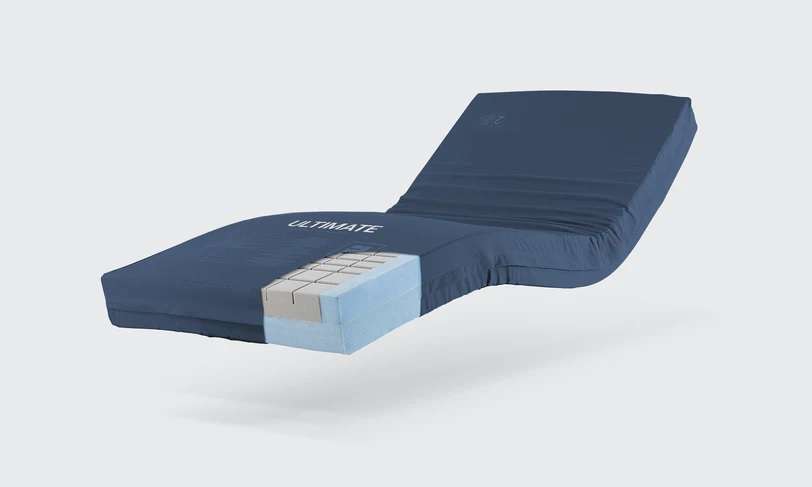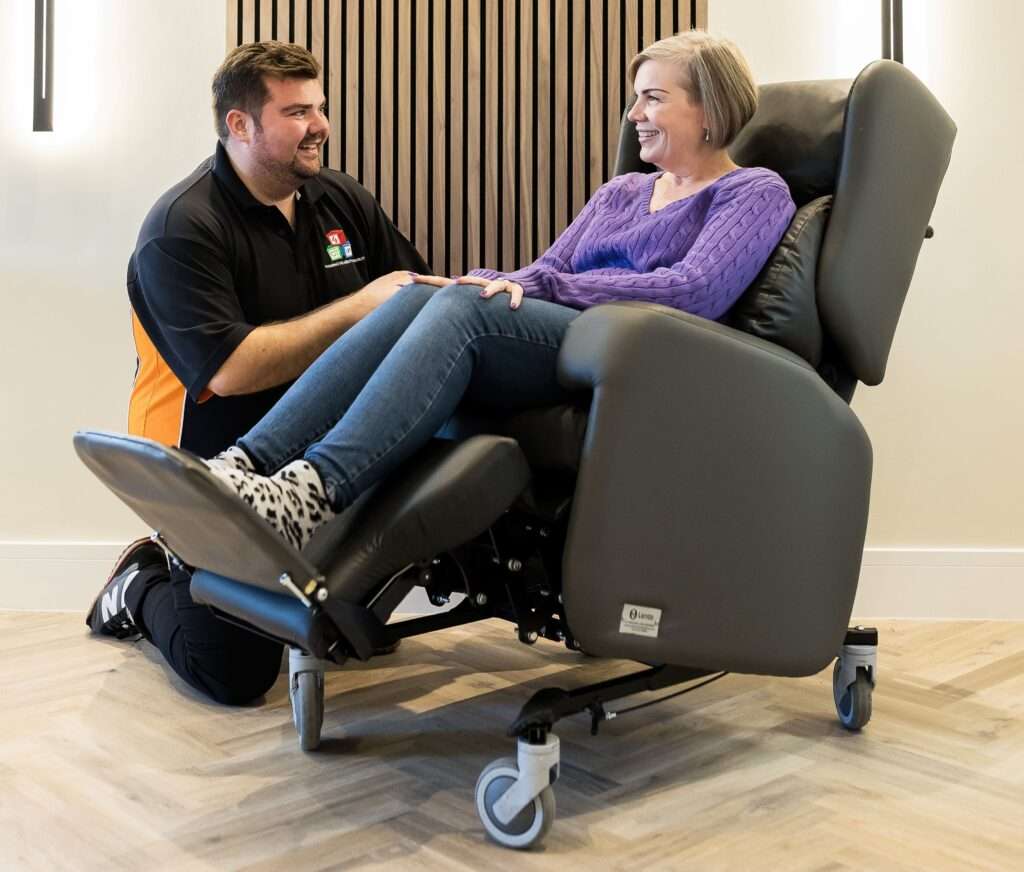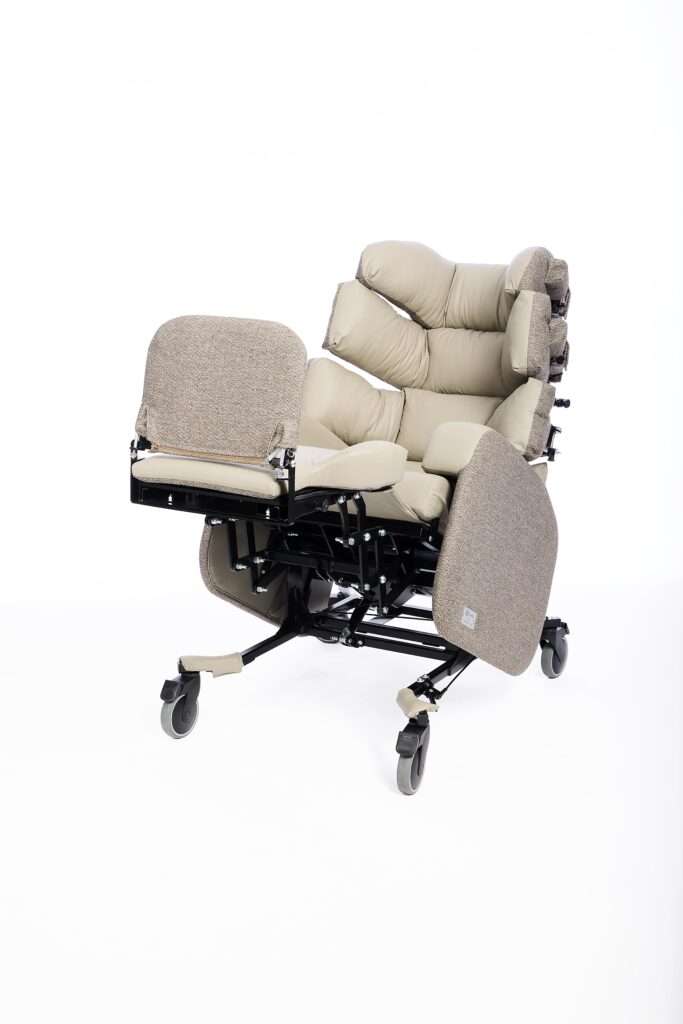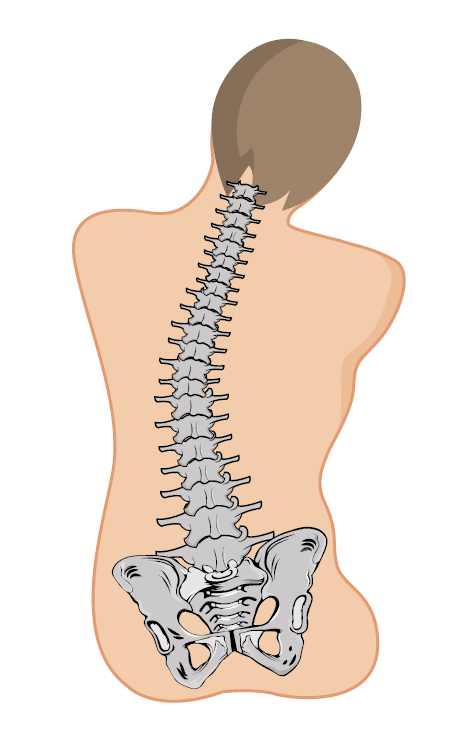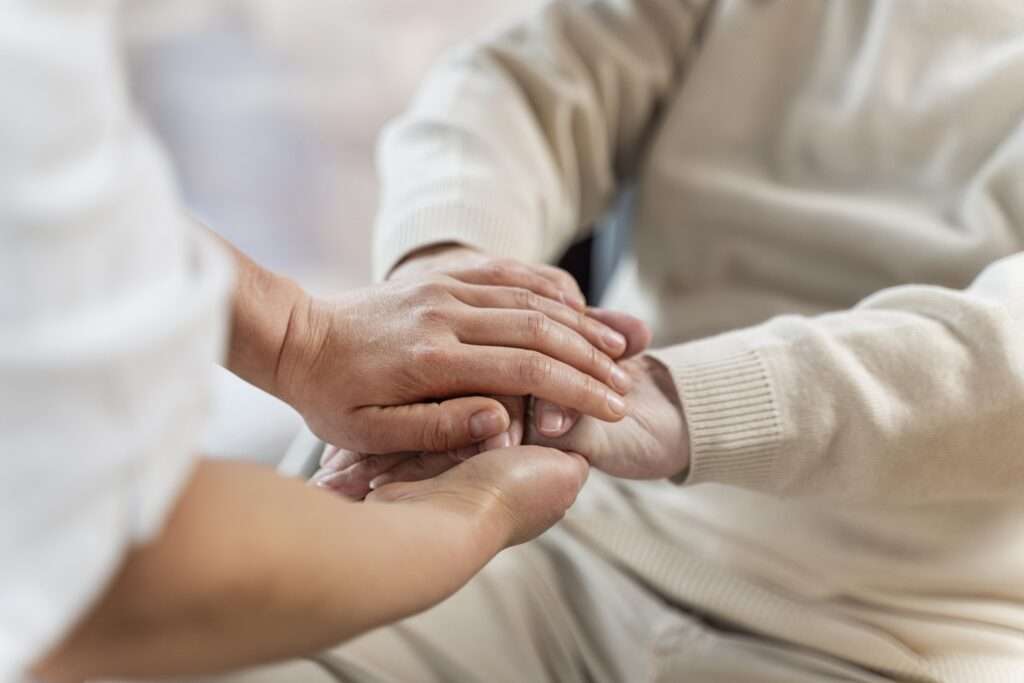Picking the right profiling mattress can be confusing. With many options available, it can be difficult to know what’s the best option for you, a loved one or a patient’s needs.
Here are the aspects to consider when making your decision on a profiling mattress.
Jump straight to…
Initial thoughts on a mattress for a profiling bed
The first thing to mention is that it’s not recommend to use a regular sprung mattress on a profiling bed. They aren’t quite flexible enough to offer the necessary support and comfort; with that in mind, you’ll be looking primarily at air and foam mattresses.
Make a note of the dimensions of the profiling bed that you’re trying to find a mattress for. There’s nothing worse than finding the right mattress, getting it home, and realising it doesn’t fit the bed!
If you’re struggling to find the right sized mattress, then it might be worth looking at getting one custom-made to the right measurements.
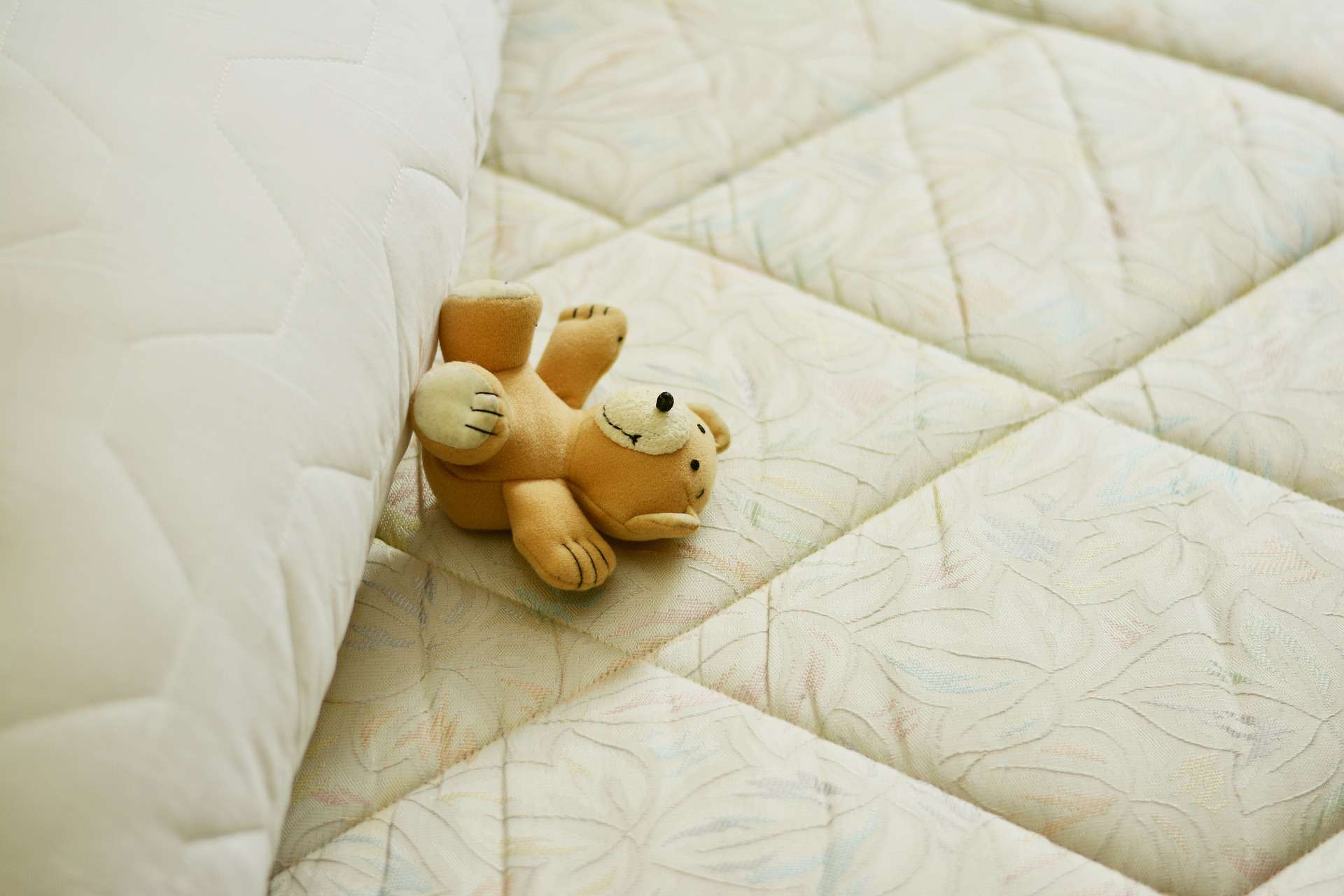
Getting a custom-made mattress may be the best way of making sure that it will fit the dimensions on your bed.
What level of pressure relief is needed?
The biggest issue to think about when choosing a mattress for a profiling bed is what level of pressure relief your client may need. Here are three questions that will help you determine what level they need:
- How long do you spend in bed?
- Can you reposition yourself to keep comfortable?
- Is there a history of tissue damage or poor skin integrity?
For clients with a moderate need for pressure relief, look at foam mattresses. For those who have more complex needs, consider air mattresses.
Different Types of Foam Mattresses
There a few different kinds of foam mattress for a profiling bed. Foam mattresses make up a vast range of pressure relief options.
- Reflex foam: This is a foam that has many air bubbles in it that compress and mould to the person’s body shape to help redistribute weight across the surface. Reflex foam is often used as a supportive layer beneath softer foams.
- Latex foam: Latex foams tend to be a lot softer and spongier than others. It consists of a lot of smaller holes that allow air to circulate around the mattress and keep it cool whilst dispelling pressure build-ups.
- Memory foam: This cushions the body and absorbs any pressure build-ups. Memory foam is great as a top layer of a mattress with some reflex foam underneath for extra support.
- It’s worth mentioning that memory foam tends to retain a lot of body heat, which means you get hotter quicker when laid on it.
Castle-top cut foam is also available in mattresses, although it is a little less common. This disperses body weight over a larger surface to prevent build-ups, and it’s easy to re-shape in profiling position.
Air Mattresses
Air mattresses are the next step up in pressure relief, and they’re often used on clients who are at higher risk. The mattress moulds itself to your body perfectly and will help to protect skin integrity.
Hybrid mattresses offer a sort of middle-ground between foam and air mattresses because they combine the two. You can use the pump to step the mattress up to air technology which flows freely through the foam elements of the mattress.
Alternatively, you can leave the pump detached, and use it as a standard foam mattress.
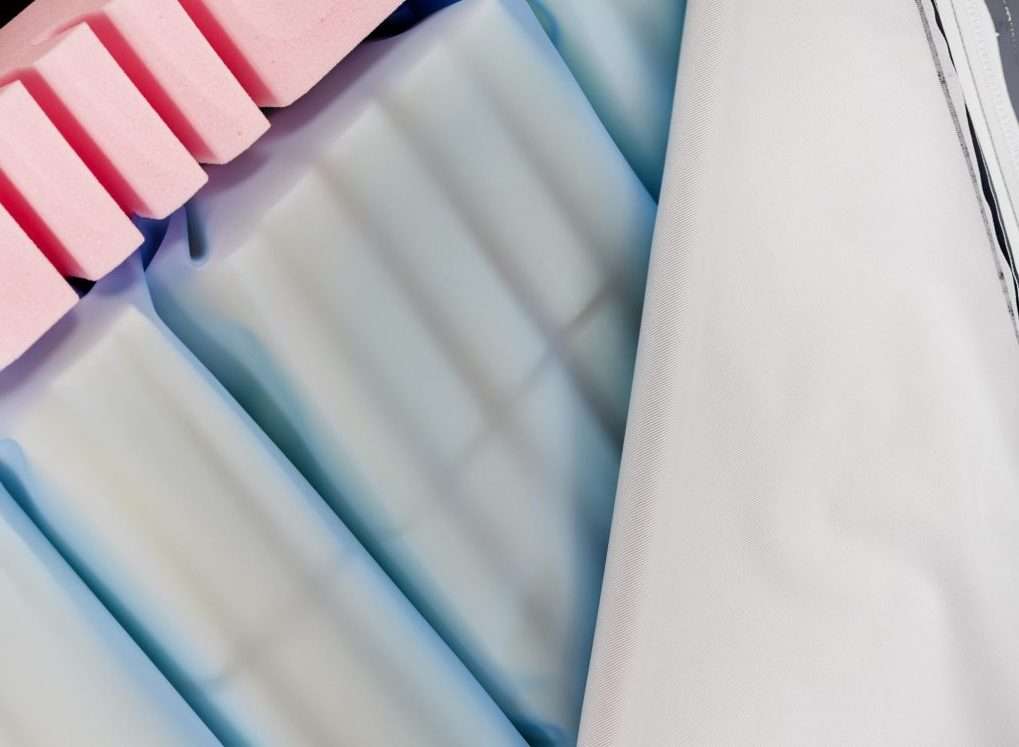
Hybrid mattresses combine air and foam technology to give you the option of switching between the three setups.
What about the mattress cover?
The mattress cover is another thing to consider when you’re choosing a mattress for a profiling bed. Depending on you or your client’s needs, and even the environment the mattress is being used in, the cover can have a lot to answer for.
The first thing to bear in mind is that the cover will have to be a little more stretchy for pressure relief. If the foam needs to contour to your body, then the cover needs to have enough give to allow you to sink right in.
The cover should also be breathable enough so that you don’t get too hot when laid in bed for a long time. You can find covers that are breathable and waterproof which is ideal for profiling beds because it keeps you cool and can be cleaned easily.
For facilities where infection control is important, you should consider having flaps over the zips on the mattress cover. This will help keep the mattress from getting contaminated.
Another aspect you may want to include is a non-slip base. This will help keep the mattress in position when the bed is profiling so that it doesn’t slip down or slide up and become a nuisance.
Air mattresses tend to have ties on each corner of the mattress that will help secure it in place on the bed.
Don’t forget siderail regulations
If you’re buying a mattress for an existing profiling bed, then make sure that you’ve got the right depth measurements. Medicines and Healthcare products Regulatory Agency (MHRA) bedrail regulations must be followed on every bed using siderails.
These regulations and precautions exist to stop a sleeper from possibly rolling over the top of the siderail or getting trapped between the mattress and the bed frame itself. The Health & Safety Executive has guidelines for the safe use of bed rails.
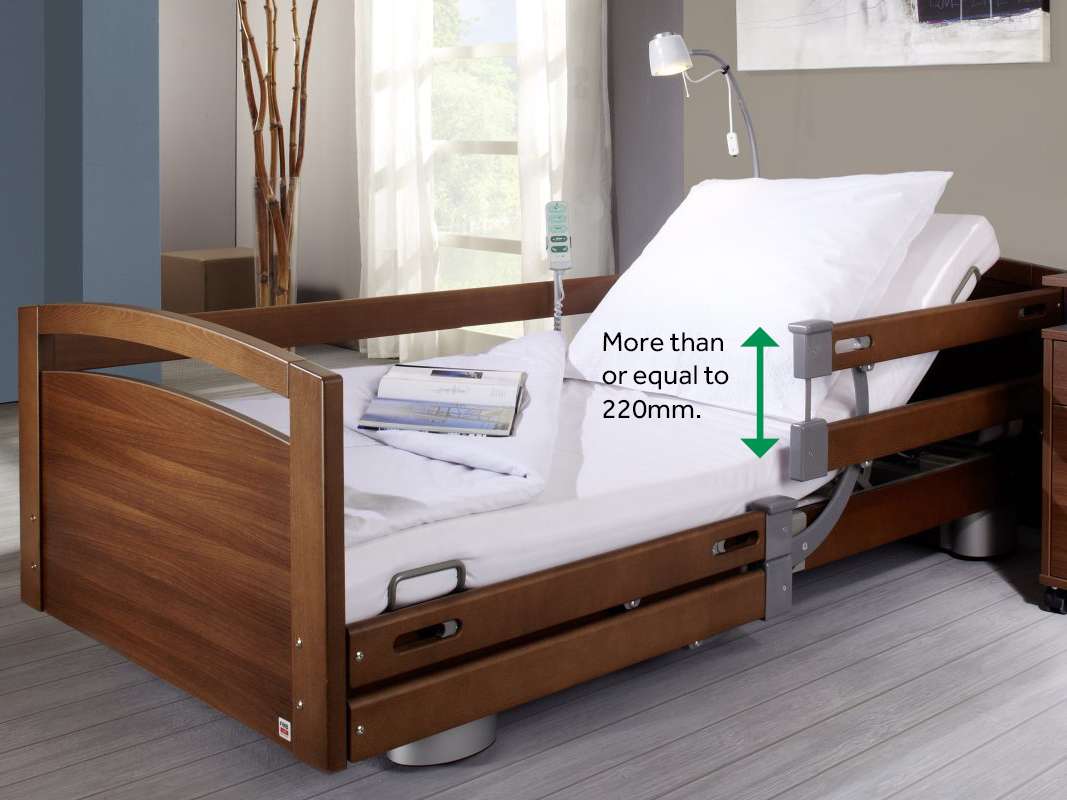
The gap between the top of your mattress and the top of the siderail should be more than or equal to 220mm.
Is the person non-mobile?
For users who aren’t mobile, then it may be worth considering adding an evacuation aid to the mattress for emergencies.
The Evacuation Sheet straps to the bottom of the mattress and has built-in handles that mean you can simply pull the mattress along if there is an emergency.
Summary
This is a brief guide on what to consider when choosing a mattress for a profiling bed, and we hope it gives you a good start. In the meantime, if you’re looking for more information, then get in touch with our team to discuss the options.





